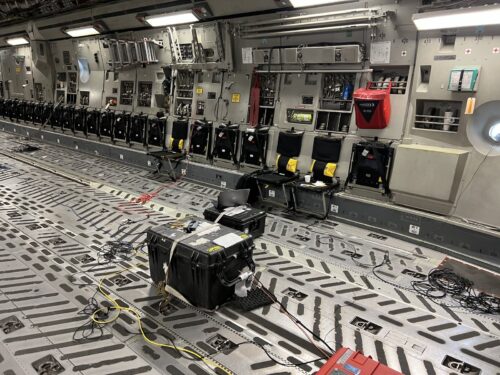In a groundbreaking achievement, the Department of the Air Force-Massachusetts Institute of Technology Artificial Intelligence Accelerator (AIA) has demonstrated the real-time application of magnetic navigation (MagNav) technology on a Pentagon aircraft. This remarkable milestone marks the first successful test of this advanced navigation system on a Department of Defense aircraft.

Photo: USAF
During exercise Golden Phoenix, the AIA MagNav team collaborated with MIT, MIT Lincoln Laboratory, the Air Force Research Laboratory Sensors Directorate, and the Air Force Institute of Technology Autonomy and Navigation Center. They conducted test flights using the C-17A from Travis Air Force Base, California.
Using AI and machine learning, the team trained AIA’s calibration and positioning neural network in-flight within minutes, using a commercially-available laptop. They employed transfer learning from AI models trained on previously collected C-17 data to expedite the process.
The successful test of MagNav on the U.S. Air Force aircraft addresses a critical capability gap identified by Gen. Mike Minihan, commander of Air Mobility Command. It reduces dependence on GPS as a single point of failure and enables alternative navigation methods like celestial navigation, signals of opportunity, visual navigation, and magnetic navigation.
Global collaboration through the Magnetic Navigation Open Challenge significantly improved the MagNav system. By comparing magnetic data generated by the aircraft to a known magnetic map, the system accurately determines the aircraft’s position. The team will present a technical report to the U.S. government, detailing the system’s navigation accuracy and paving the way for MagNav experiments on other Department of Defense platforms.
Maj. Kyle McAlpin, AIA MagNav liaison, expressed enthusiasm for the achievement, emphasizing the importance of unassailable positioning and navigation. The successful testing of MagNav on the Pentagon aircraft exemplifies the Air Force’s commitment to innovation and collaboration, benefiting both the military and the broader aviation community.
For more information, hit the Source below